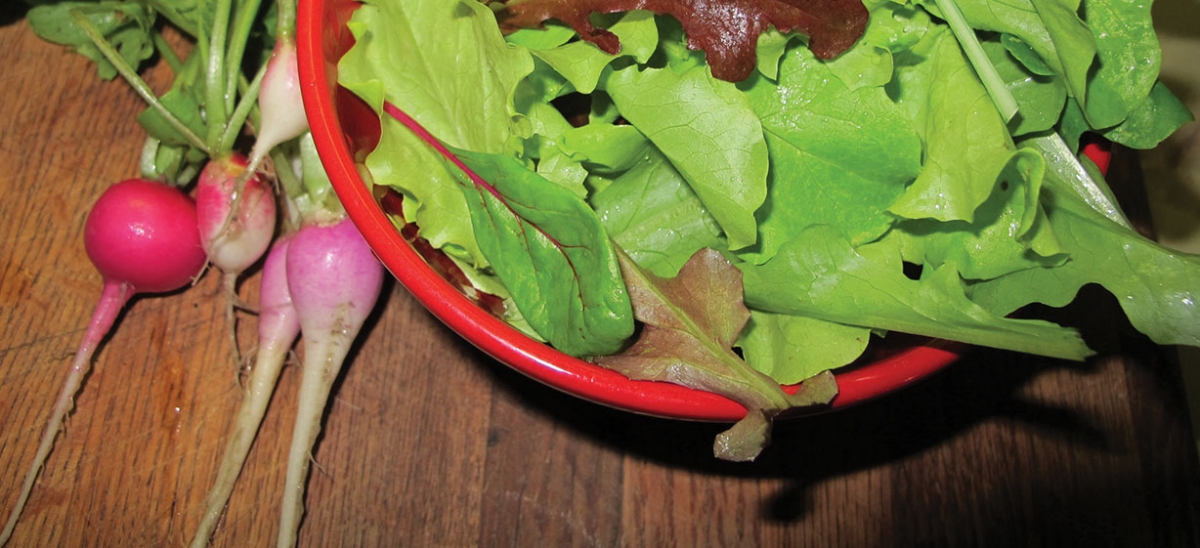
The garden’s palette yawns tan and brown as winter ends and spring nears each year. All that’s left after the crusty snow melts (if I’ve remembered to diligently clean up the previous fall) are blank brown beds—the clean slates of gardening. I like the do-over aspect of each new garden season, but I long for the crisp bright greens that signal the start of everything growing again.
And so I’m motivated to trudge through the mid-March mud and muck to scatter some early seeds in the beds closest to the house. Although I believe in my garden and especially in its soil, which I’ve maintained the past 13 years, and although I practice this early ritual seed scattering every year, there’s always an aspect of disbelief.
How can these tiny, tiny seeds produce anything out here in this dreary post-winter world? Lettuce seeds, unlike hefty peas or the corn I’ll plant later in the season, are so small you can easily think a packet is empty when it’s full. Give it a few maraca shakes and the little rattle that escapes lets you know. There’s a kind of care to this planting—open the packet cautiously, shake the packet gently, make sure the wind doesn’t take the cupped seeds away. Keep your hands warm so your fingers are dexterous enough to sprinkle the seeds over the soil, like salt over your perfectly baked potato.
I scatter the seeds on the muddy bed, no worrying about straight lines or what variety is mixed with what. It’s a jumble of hope, scattered there in the mud. Then, I do what every watched-pot watcher has been instructed to do over the years—I walk away.
In the meantime, my perennial herb garden is planted at the far end of the yard. Over the years I’ve added oregano and sorrel, bee balm, lavender, chamomile, sage, lemon balm, borage, and chives. As I wander around the crispy yard each morning—still frosted, cleaning up small piles of leaves or forgotten geranium pots from last year’s growing season, there comes a day when the chives have poked up from the ground—their bright green spikes a starter’s pistol, signaling we are beginning all over again. Snipping the chives is my first tiny garden celebration each year.
Later in the season, the chives will become mundane, a steady plant that’s always at the ready for garnishing main dishes with its shoots or pretty purple flowers, but in the spring, the chives I snip seem like radical contraband. I’ll make a simple goat cheese and chive omelet—laying the chives out on the cutting board to admire them before chopping them up and adding them to the egg.
Soon the lettuces sprout up springy fresh. I adore butterhead but also have spicy arugula on hand, as well as red and green leaf lettuces. Those first spring salads are bright and crunchy green and red. Later the lettuce will get hardier and stronger in taste. It’s then I turn to making lettuce soup or heartier salads with farro or quinoa added in alongside pecans, dried fruits, and crumbled feta. In the spring though, everything is delicate. At first, there’s only lettuce and chives to harvest, and because the lettuce serves as the highlight of the meal, we eat simple salads with only salt and pepper, a sliced hard boiled egg on the side. Sometimes I drizzle on a tiny bit of olive oil, along with some pea shoots from those newly sprouting plants, and a few leaves of baby kale or chard. The thin leaves taste like the manifestation of hope, like new earth and bright chilly mornings.

